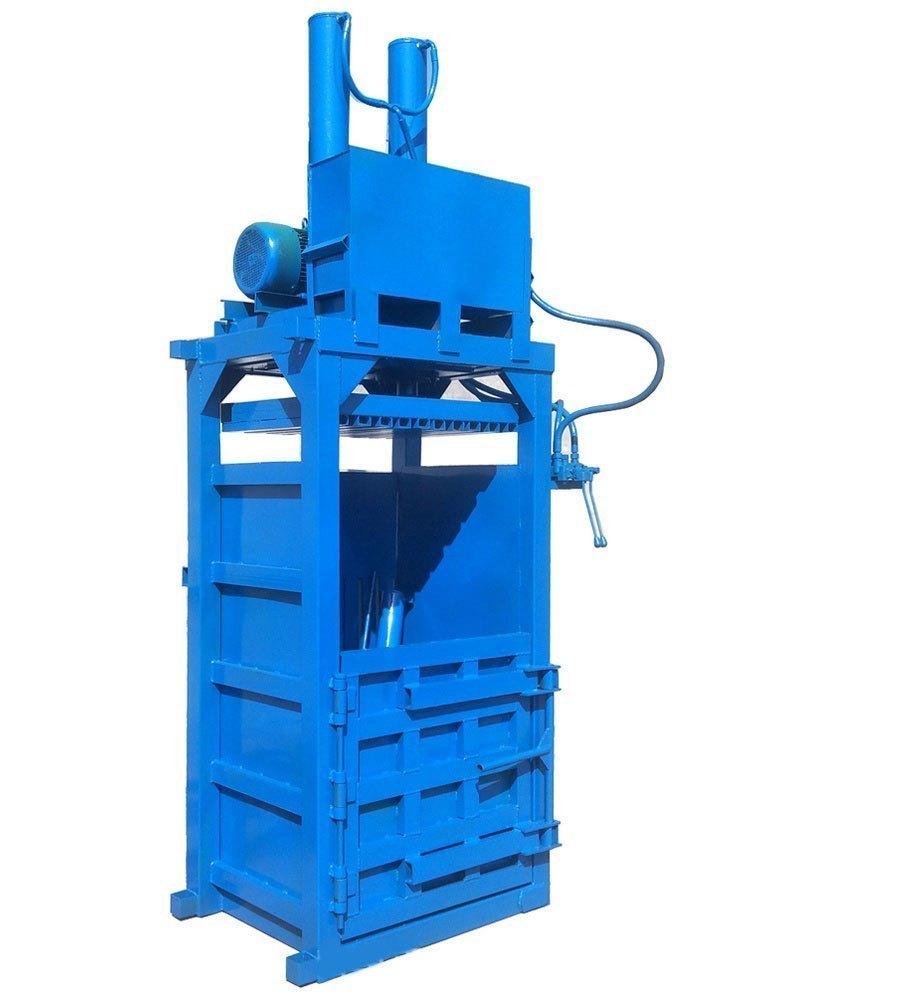In the realm of waste management, baling press machine has emerged as indispensable tools for compacting and processing various types of waste materials efficiently. From recycling centres and industrial facilities to commercial establishments and agricultural operations, baling press machines play a crucial role in optimizing waste handling processes. This article delves into the functionalities, benefits, and applications of baling press machines, highlighting their significance in promoting sustainability and resource conservation.
Understanding Baling Press Machine
Baling press machine, also known as balers, are mechanical devices designed to compress and bundle different types of waste materials into compact and manageable bales. These machines are commonly used across industries to process recyclable materials such as cardboard, paper, plastics, metals, textiles, and agricultural waste. Baling press machines come in various sizes and configurations, including vertical balers, horizontal balers, and specialty balers tailored to specific waste types.
Key Components and Functionality
- Hydraulic System: The core component of a baling press machine is its hydraulic system, comprising cylinders, pumps, valves, and hydraulic fluid. The hydraulic system applies pressure to compress waste materials into dense bales, ensuring efficient utilization of space and ease of handling.
- Loading Chamber: Baling press machines feature a loading chamber where waste materials are fed manually or through conveyor systems. The size and capacity of the loading chamber vary depending on the type and volume of waste being processed.
- Baling Cycle: The baling process typically involves several stages, including material loading, compression, bale ejection, and tying or wrapping of the bale with wires, straps, or plastic film. Advanced balers may include automated features for increased productivity and user convenience.
Types of Baling Press Machines
- Vertical Balers: Vertical balers are suitable for small- to medium-scale operations and are designed to compress waste materials vertically. They are space-efficient, easy to operate, and ideal for recycling centres, retail stores, and offices generating moderate amounts of waste.
- Horizontal Balers: Horizontal balers are larger and more powerful, capable of processing high volumes of waste materials horizontally. They are commonly used in industrial settings, distribution centres, and manufacturing facilities dealing with bulky or dense waste streams like cardboard, plastics, and metal scraps.
- Specialty Balers: Specialty balers cater to specific waste types such as agricultural waste (e.g., hay, straw), textile waste (e.g., clothing, fabrics), and foam waste (e.g., EPS foam, polyurethane foam). These balers are designed with features and adaptations to handle unique waste materials effectively.
Benefits of Baling Press Machines
- Space Optimization: By compressing waste materials into dense bales, baling press machines optimize storage space, reduce the need for frequent waste removal, and facilitate organized waste handling.
- Cost Savings: Efficient waste compaction and bale formation lead to reduced transportation costs, lower landfill fees, and potential revenue generation through the sale of recyclable bales to recycling facilities or scrap dealers.
- Environmental Impact: Baling press machines contribute to environmental sustainability by promoting recycling, waste diversion from landfills, and conservation of natural resources through the efficient utilization of recyclable materials.
- Improved Safety and Hygiene: Compact bales are easier and safer to handle, store, and transport, reducing the risk of workplace accidents and promoting a cleaner and more hygienic waste management environment.
Applications of Baling Press Machines
- Recycling Facilities: Baling press machines are integral to recycling facilities for processing recyclable materials such as paper, cardboard, plastics, and aluminium cans into bales suitable for transportation and recycling processes.
- Retail and Commercial Establishments: Retail stores, supermarkets, warehouses, and commercial establishments use balers to compact packaging materials, cardboard boxes, and plastic packaging for efficient waste management and recycling.
- Manufacturing and Industrial Sites: Industries generate various waste streams, including production waste, packaging materials, and scrap metals. Baling press machines help industries manage these waste streams effectively, reduce waste volumes, and promote recycling and resource recovery.
- Agricultural Operations: In the agricultural sector, balers are utilized to bale hay, straw, and crop residues for storage, transport, and livestock feed purposes, optimizing agricultural waste management practices.
Innovations and Trends
- Automated Systems: Advanced baling press machines feature automation, PLC controls, and sensors for monitoring and optimizing baling processes, reducing manual labour, and enhancing operational efficiency.
- Integration with IoT and Data Analytics: IoT-enabled balers collect data on baling performance, material throughput, and equipment status, enabling predictive maintenance, performance optimization, and data-driven decision-making.
- Energy Efficiency: Energy-efficient hydraulic systems, variable speed drives, and power-saving features are incorporated into modern baling press machines to minimize energy consumption and environmental footprint.
- Customization and Adaptability: Manufacturers offer customizable baling solutions tailored to specific waste types, volumes, and operational requirements, ensuring optimal performance and versatility across diverse industries.
Conclusion
Baling press machine represent a pivotal technology in modern waste management practices, offering efficient waste compaction, space optimization, cost savings, and environmental benefits. As sustainability and resource conservation gain prominence, the adoption of advanced baling technologies, automation, and integration with IoT-driven solutions is expected to accelerate. By leveraging the capabilities of baling press machines, industries, recycling facilities, and agricultural operations can contribute significantly to a cleaner, greener, and more sustainable future. Trends Share

